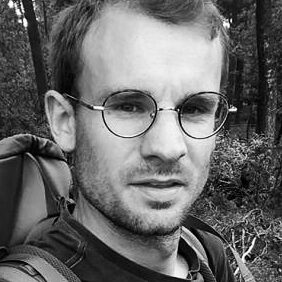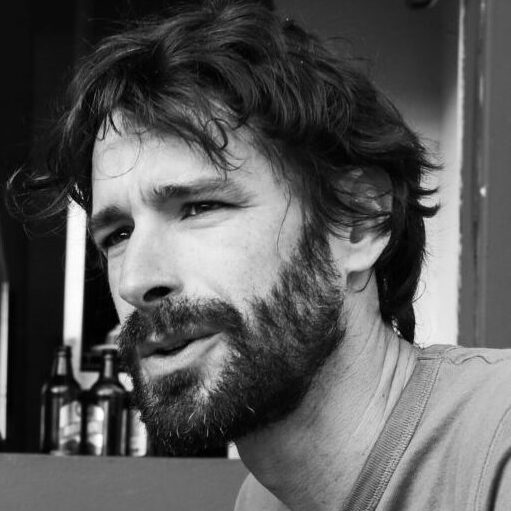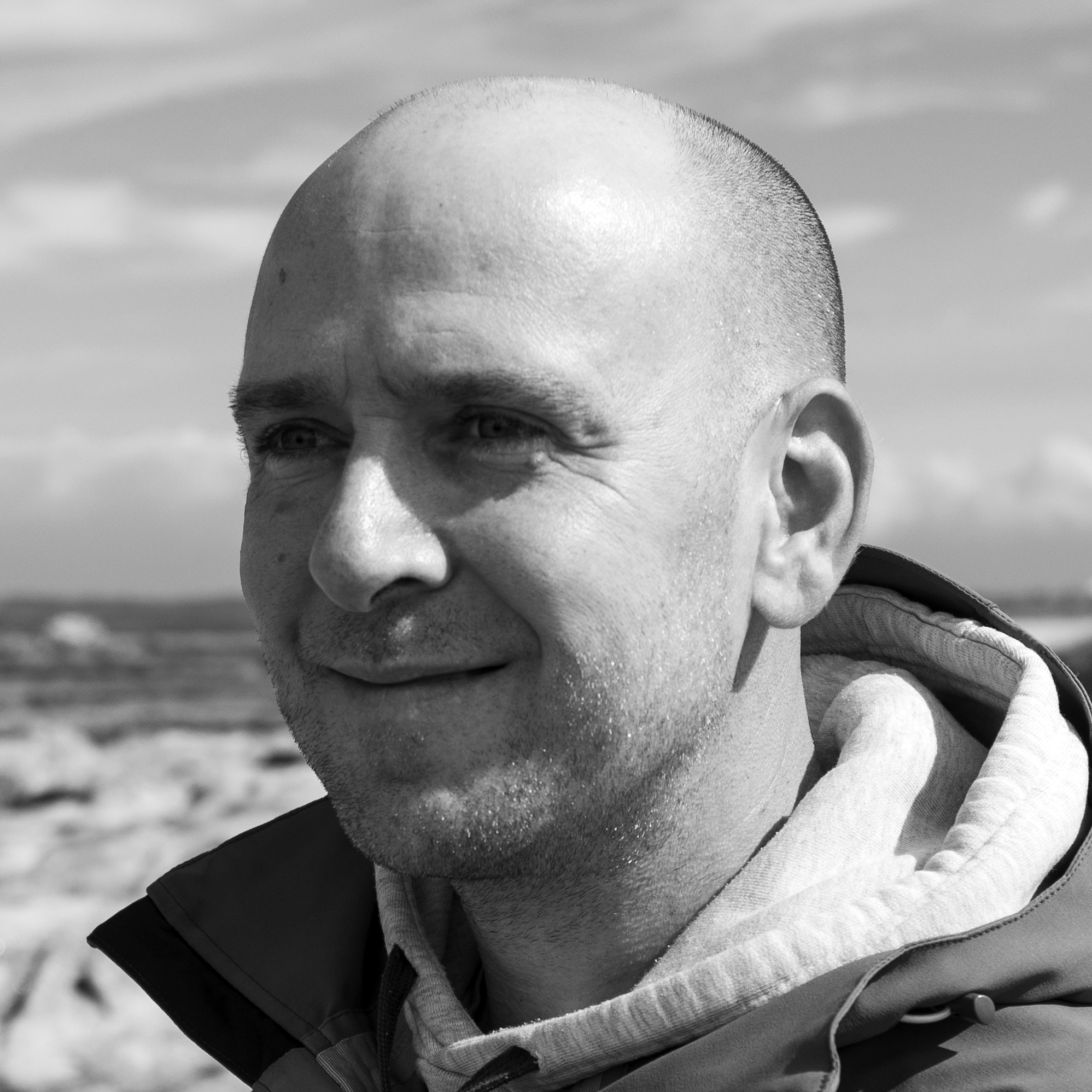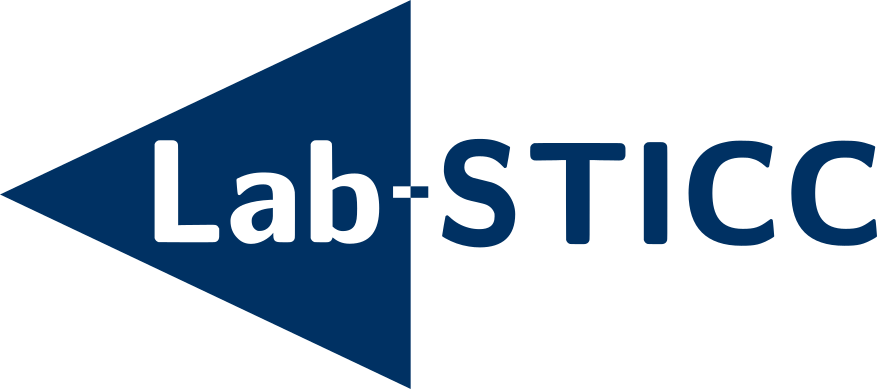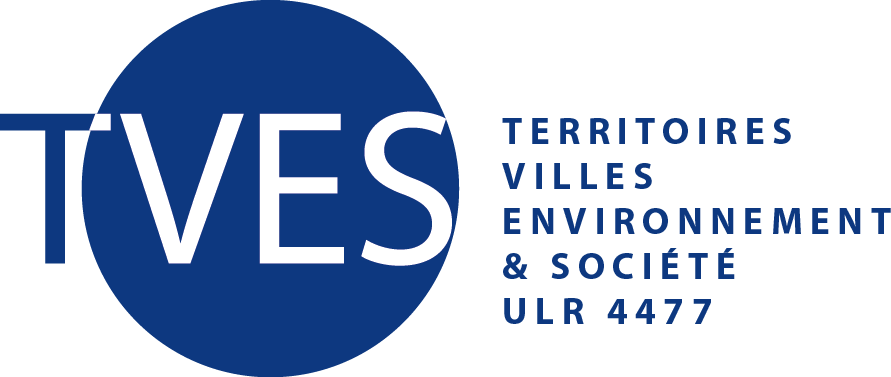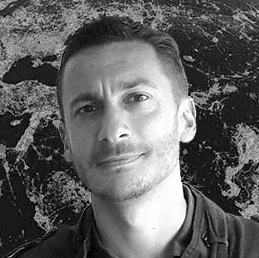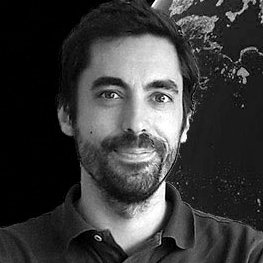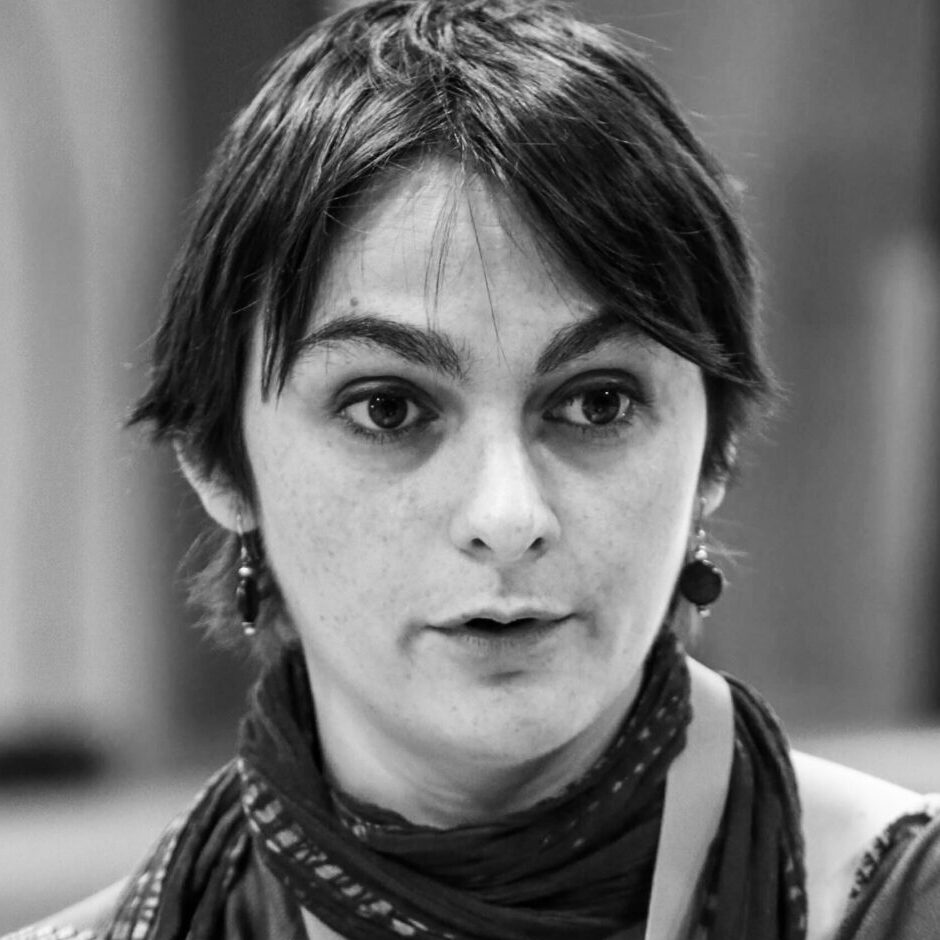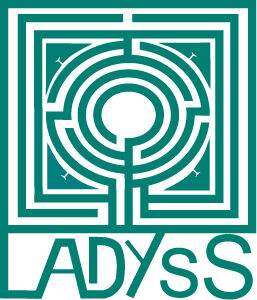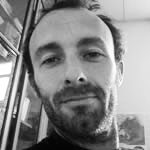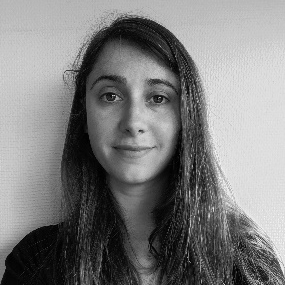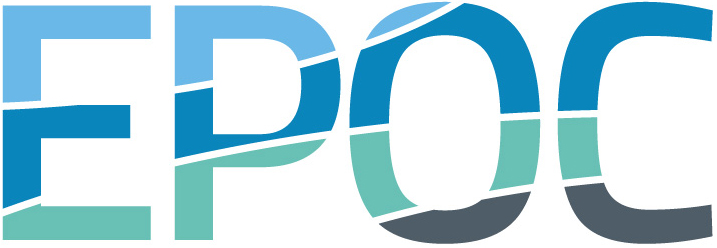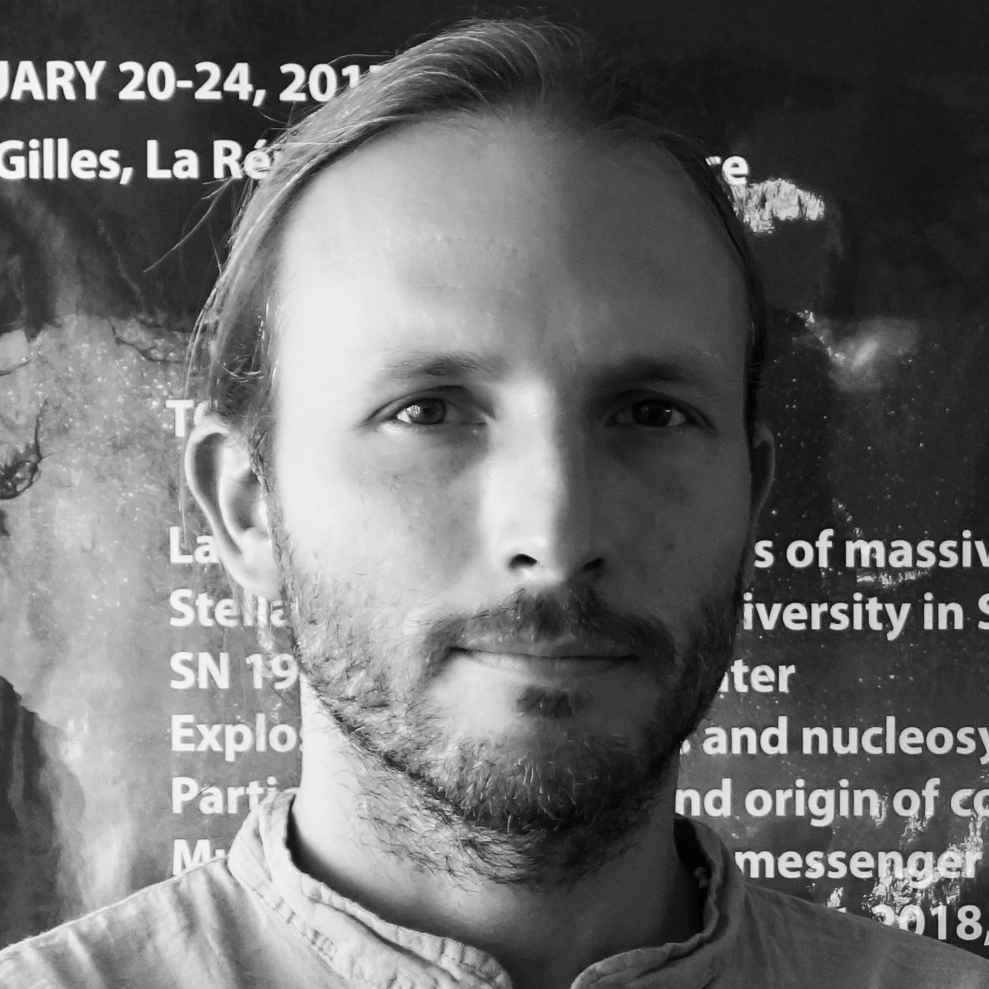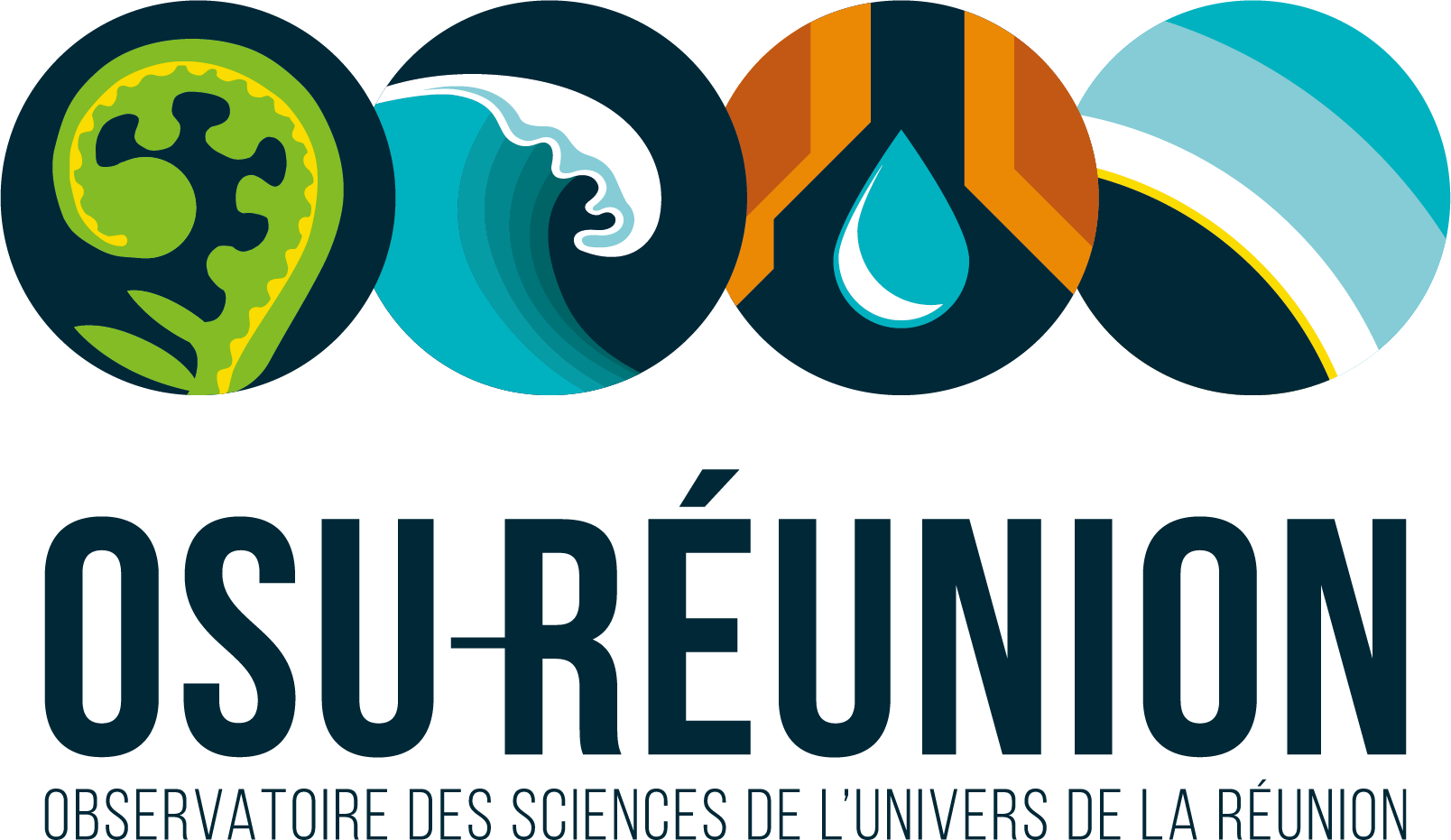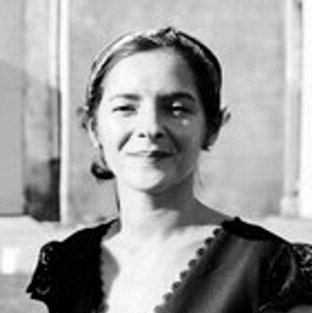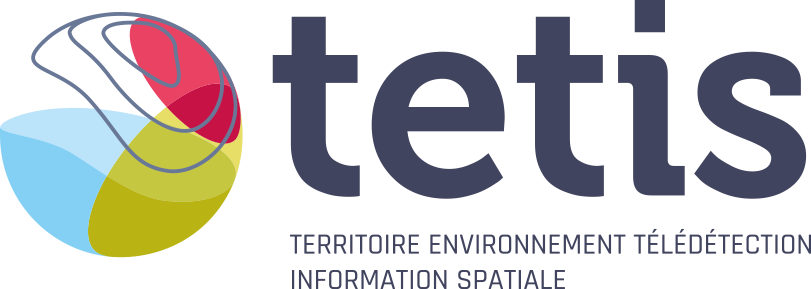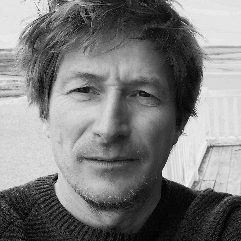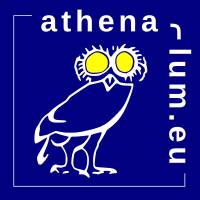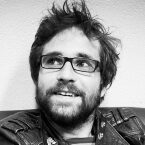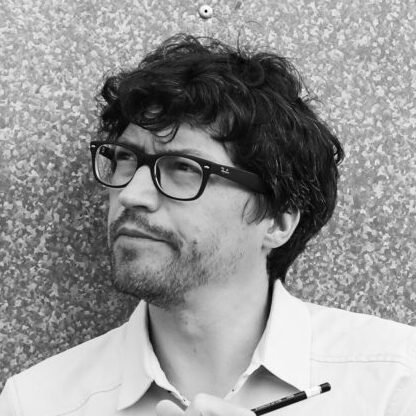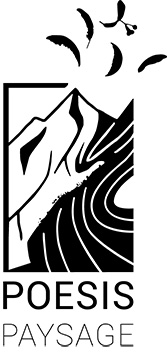the members of the Nocturnal Environment Observatory
Who participates in the Observatory?
Through its research programmes, actions and partnerships with various territories, the Nocturnal Environment Observatory brings together a large community of scientists from various disciplines and institutions, experts from different and complementary professional fields (environmental metrology, landscape design, environmental education, videography), as well as agents at the service of protected area management structures and territorial projects.
The researchers and practitioners of the Observatory are listed below in alphabetical order. The colour code corresponds to the main disciplinary fields that make up this network: in blue are the territorial sciences and the social sciences, in green are the natural sciences, in red are the sciences of the universe, engineering and environmental physics. And in yellow, professionals specialising in lighting engineering and the metrology of artificial light.
The researchers
Kévin Barré
Postdoctoral researcher in Ecology (UMR CESCO, MNHN). His work focuses on understanding the impact of different human activities on biodiversity and the levers that can be used to mitigate them. In particular, he studies the spatial variation of the effects of artificial light at night on the behaviour and distribution of bats, depending on the landscape context and the fundamental parameters of the light sources.
Rémi Bénos
Associate Professor of Environmental Geography (UMR GÉODE, INU Champollion). He is interested in the various ways in which the environment is incorporated into collective narratives in the Anthropocene era. Among these, landscape and heritage seem to be non-territorialised categories of social critique. Within the Observatory, her work focuses on identifying nocturnal spatialities and territorialities through inhabitant surveys and ethnography.
Christian Brouat
Research and training technician at the University of La Réunion. Within the ENERGY-Lab laboratory, he plays a key role in metrology, ensuring the precise calibration of measuring instruments, and in experimentation, working with researchers to design, set up and supervise experiments aimed at studying variable renewable energy in the context of climate change. His expertise is essential to ensure the reliability of data and research results.
Samuel Challéat
CNRS researcher in Environmental Geography (UMR GÉODE, Institute of Ecology and Environment). His radically interdisciplinary work focuses on the various collective actions taken in and by local areas to preserve the resource of darkness, improve the nocturnal environment and combat light pollution. He is responsible for the scientific coordination of the programmes, actions and partnerships of the Nocturnal Environment Observatory.
Mathieu Delsaut
Scientific Computing Engineer at ENERGY-Lab, member of the Observatory of Natural Environments and Global Change at the Faculty of Science and Technology of the University of La Réunion. He is responsible for strategic data management, carries out studies on variable renewable energy and climate change, and contributes to OpenData dissemination, promoting free and transparent access to results for the scientific community and the interested public.
Nicolas Farrugia
Associate Professor (UMR Lab-STICC, IMT Atlantique). He is committed to the development of interdisciplinary approaches in artificial intelligence for eco-acoustics, bio-acoustics and cognitive neuroscience. He is involved in several programmes and fields of the Nocturnal Environment Observatory to study sound environments and landscapes (Pyrénées ariégeoises, Nocturnal Environment Observatory on Réunion Island).
Magalie Franchomme
Associate Professor of Geography (University of Lille and Université du Littoral Côte d'Opale), co-responsible for ULR TVES Theme 2 (Revealing inequalities, adapting/mitigating territories) and Master 2 Environment and Sustainable Cities. His research focuses on lighting stakeholders and the social acceptability of light pollution reduction measures.
Jérémy Froidevaux
Research Fellow in Conservation Biology (University of Stirling, Department of BES; associated with UMR CESCO). His research focuses on current issues in the monitoring and assessment of biodiversity in the context of its erosion under anthropogenic pressures. He is interested in applied research issues, which he addresses through the study of species, populations and communities of bats, birds and insects.
Laurent Godet
CNRS Research Director in Conservation Biology (UMR LETG at Nantes University, Institute of Ecology and the Environment). He is interested in the anthropisation of landscapes and its impact on biodiversity. A naturalist from an early age, he works mainly on birds and mammals, seeking to understand how their distribution (from home range to distribution area) and also their rhythm of activity are modified by humans.
Adrien Guetté
Associate Professor of Environmental Geography at the University of Tours (DATE team, UMR CITERES). His research focuses on the anthropisation and naturalness of landscapes. Since 2018, he has been working in particular with the IUCN on the development of a national mapping of potential naturalness (CartNat), which aims to better understand the links with the distribution of biodiversity and to support public policies for nature conservation.
Marion Maisonobe
CNRS researcher in Geography (UMR Géographie-cités, Institute of Human and Social Sciences). Her work focuses on the geography of science, exchanges and links between places, the circulation of ideas and data visualisation. As part of the Nocturnal Environment Observatory on Réunion Island, she is working in particular on the cultural dimension of the fénoir. She is analysing the presence of darkness in various bodies of texts and in the imagination.
Léa Mariton
Postdoctoral researcher in Ecology (UMR CESCO, MNHN). Her research is in the field of conservation biology, with a strong interest in studying the impact of human pressures on biodiversity and finding solutions. She is particularly interested in the effects of light pollution on the spatial and temporal distribution of bats, and her work has led her to develop a taste for emerging methods of biodiversity monitoring (participatory science, eco-acoustics).
Johan Milian
Associate Professor of Environmental Geography and Co-Director of the UMR LADYSS (Université Paris 8). His research focuses on conservation policies and the relationship between environmental protection and local development, particularly in European mountain contexts, the Mediterranean basin and tropical island environments. He works on these topics in the context of fundamental and action research projects.
Béatrice Morel
Senior Lecturer at the University of La Réunion. Her research focuses on the impact of climate variability on variable renewable energies (solar, wind) in the context of climate change. Within the ENERGY-Lab laboratory, she is developing a synergistic observation/modelling approach to regionalise climate change information at very high spatial resolution for Réunion and the islands of the southwest Indian Ocean.
Sylvain Morvan
Research engineer in Instrumentation and Physical measurements at the CNRS (UMR GÉODE, Institute of Ecology and Environment). With practical experience in several observatories of the CNRS Institute for the Sciences of the Universe, he is involved in the Nocturnal Environment Observatory on Réunion Island, in the implementation of the Light Pressure Monitoring Network, as well as in the OUTRENOIR programme (financed by the MITI of the CNRS), which mobilises eco-acoustics.
Laura Payton
CNRS researcher in marine chronobiology, working with the ChronoTeam at the Arcachon Marine Station (UMR EPOC, EA team). She studies the biological rhythms of marine invertebrates (bivalves, zooplankton) and their disruption by anthropogenic pressures.She is interested in the impact of light pollution on the synchronization of biological rhythms in coastal organisms, combining field and laboratory approaches, molecular and behavioral tools.
Matthieu Renaud
CNRS researcher (CNRS Terre & Univers, OSU-Réunion), astrophysicist by training, he studies light pressure using ground-based data and modeling tools (atmospheric, meteorological and orographic parameters), and develops educational and participatory science projects to preserve the starry sky. He is notably involved in the development of the Nocturnal Environment Observatory of Reunion Island.
Léa Tardieu
INRAE researcher in Environmental Economics (UMR TETIS), researcher at CIRED. Her research focuses on the modeling, mapping and analysis of services provided by nature in order to better take into account human-nature interactions in regional planning policies and projects, as well as the modeling of individual preferences for the implementation of biodiversity conservation measures.
Damien Tran
CNRS researcher in chronobiology and marine ecotoxicology, member of the ChronoTeam working group at the Arcachon Marine Station (UMR EPOC, EA team). He developed the HFNI valve biosensor to study the behavior of bivalves in their biotopes. He studies ecosystem disturbances through the prism of dysfunctional biological rhythms, in particular the impact of light pollution on coastal organisms, combining molecular and physiological approaches.
The practitioners
Hélène Foglar
Agronomist and ecologist. As an independent practitioner (Athena-Lum Consultancy), she has been working on light pollution issues for 15 years, in collaboration with her husband David Loose. They have been trained in public lighting techniques so that they can initiate a dialogue within local authorities between the "public lighting" and "environment and biodiversity" departments, and educate the public by encouraging them to ask questions on site about the effects of artificial lighting and the need for light and darkness.
David Loose
Freelance photographer and ecological consultant. He has worked mainly on issues of conservation priorities and wildlife disturbance, particularly in the context of town planning documents. His work as a local councillor and his support for the work of Hélène Foglar have given him practical experience of lighting issues. Finally, he is developing a body of photographic work and personal reflection on the relationship between humans and nature, at the crossroads of the natural and human sciences.
Johann Michalczak
Photographer, cameraman and director of social documentaries for France Télévision. A freelance photographer, he soon became involved in image production, working as a reporter-photographer for the daily press while developing his skills in photographing nocturnal landscapes. He then specialised in documentary filmmaking and, since 2013, has been following the work of the Renoir research group and the Nocturnal Environment Observatory.
Charles Ronzani
DPLG landscape architect, graduate of the National School of Landscape Architecture in Versailles. As a freelance practitioner and illustrator (Poesis Paysage design consultancy), he develops concepts, methods and tools for understanding darkness as a "nocturnal landscape" from the perspective of sensitive experience. For several years, he has been developing participatory and artistic methods to explore, record, spatialise and illustrate nocturnal environments. He worked for 10 years in a Regional Natural Park.


